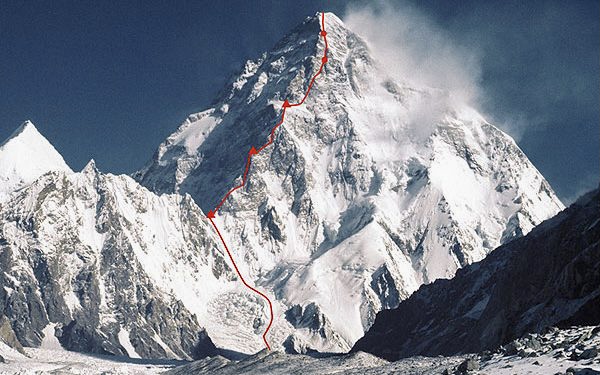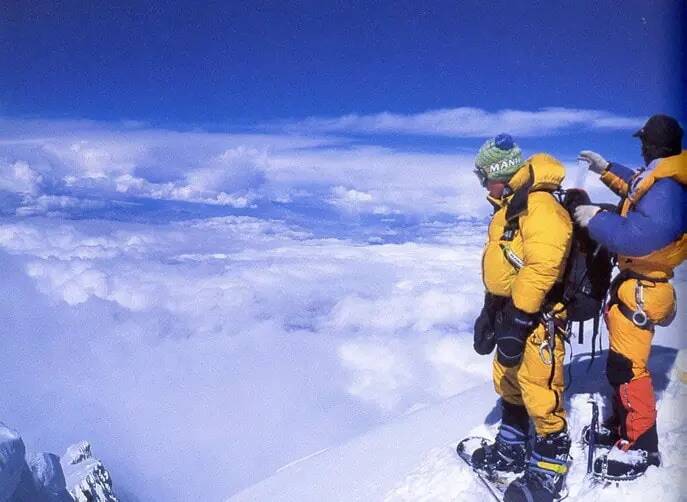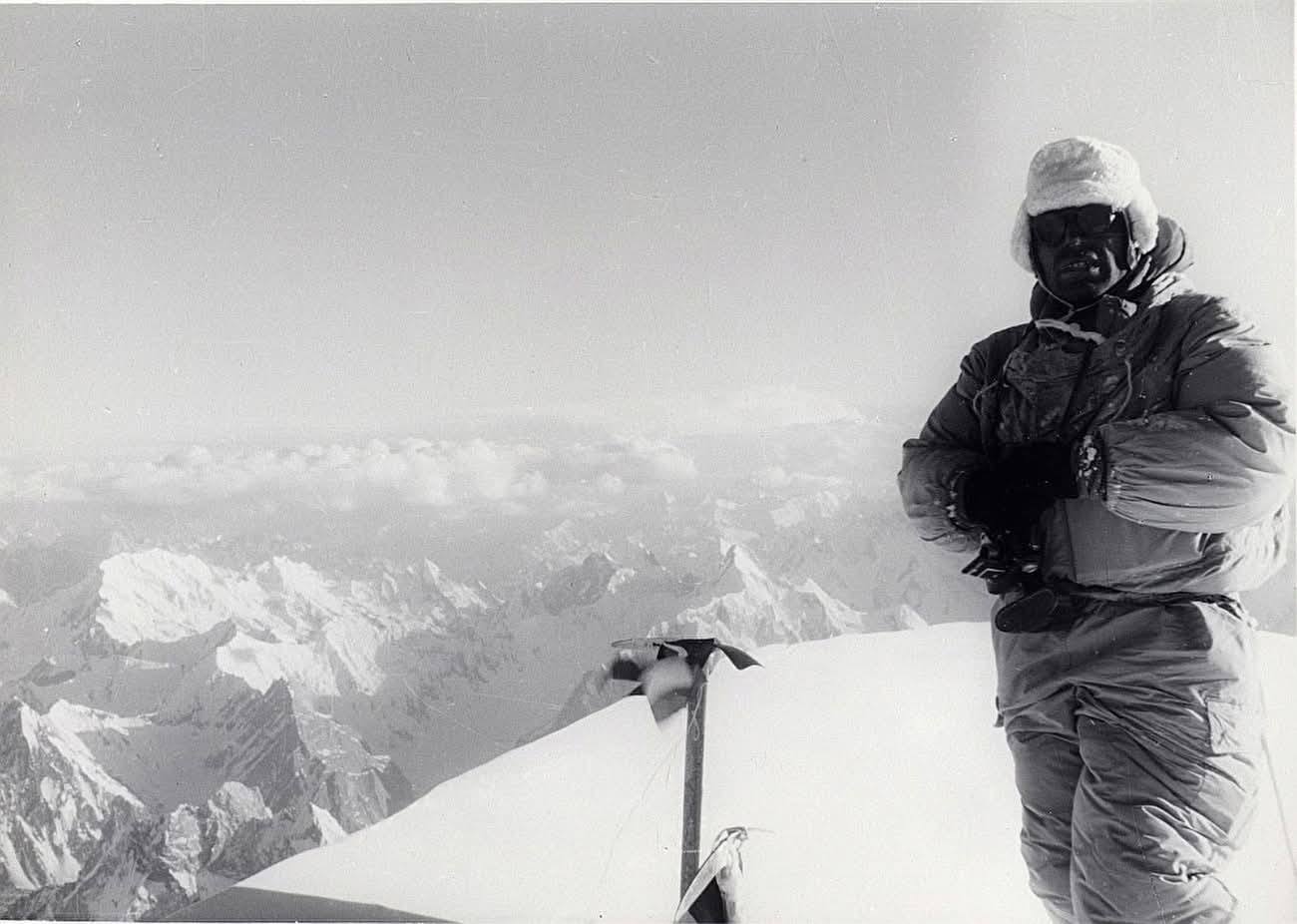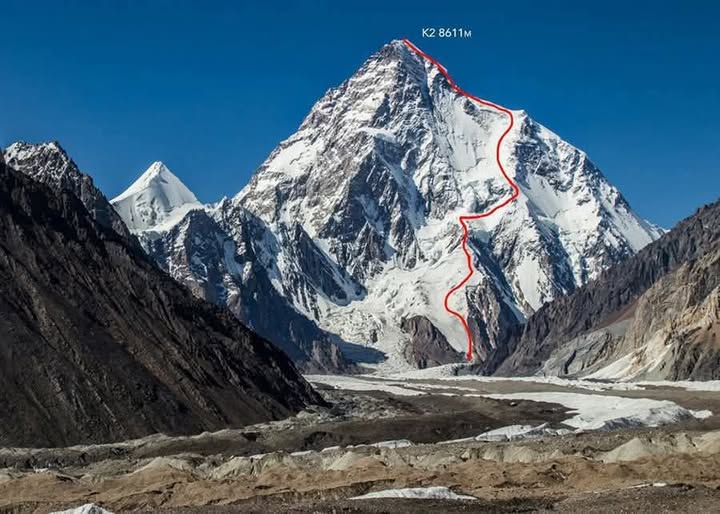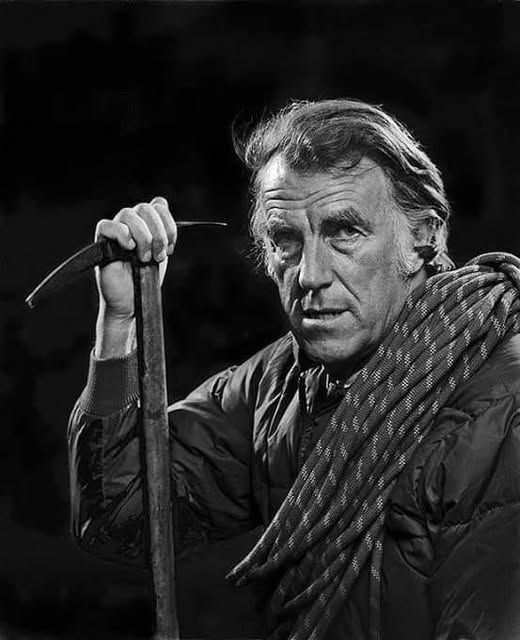In 1986, when the summer arrived, a small Polish-Slovak team set their sights on bold, pure, and so dangerous line on Mt K2 (8611 m) in Pakistan, which would be called the Magic Line.
A steep, knife-edged ridge situated on the south-southwest pillar of the mountain, which rose through rock, ice, and snow in an unrelenting sweep toward the sky. Where the standard Abruzzi Spur climbed diagonally, retreating from danger, the Magic Line cut directly up the mountain’s exposed face only few had touched it, but no one succeeded then.
But the international team, led by Polish mountaineer Janusz Majer, not only believed in its beauty and its possibility but also believed that this line of the unclimbed pillar could be theirs.
The expedition, which was organized by the Mountaineering Clubs of Katowice and Poznań and supported by the Polish Mountaineering Association, was modest in size: three women — Anna Czerwińska, Krystyna Palmowska, and Dobrosława Miodowicz-Wolf, and five men, including Petr Božik from Czechoslovakia, Przemysław Piasecki, Krzysztof Lang, Wojciech Wróz, and Majer himself from Poland.
The beginning of the climb was delayed by Logistical issues, and the chaos of the 1986 climbing season plagued them from the start. Tragedies unfolded on other parts of the mountain: Americans Alan Pennington and John Smolich died in an avalanche while attempting the same line. Renato Casarotto, the renowned Italian soloist, perished in a crevasse while retreating from his third attempt. The mountain seemed cursed and Ominous.
But the Polish didn’t hesitate to move; they began their climb on June 22. The Camp I was established first, at the Negrotto Col (6,300 m), then Camp II was pitched at 6,900 m, and by July 17, they established Camp III at 7,400m, below a hanging glacier. From there, the route came out steeply: through 60° ice with overexposed rock steps, and across mixed terrain above 8,500 meters, leading to a thin snow ridge to the summit.
On August 1, climbers Wróz, Piasecki, and Božik bivouacked at 8,000m in a sack, then again at 8,400m, before pushing upward.
At 6:00 PM on August 3, they stood atop K2 (8,611m), becoming the first humans to complete a new route via the Magic Line.
The celebration was brief, but they were exhausted, and the daylight was fading, and the descent was yet to come.
Because of the technical difficulty of the Magic Line, the three men decided to descend the Abruzzi Ridge, which was partially fixed with ropes. But at 11:30 PM, while rappelling through the infamous Bottleneck of the mountain at 8,100 m, disaster struck Wojciech Wróz fell to his death.
The exact cause is unknown, but a one-meter gap in the fixed ropes may have played a key role. The climbers were descending in order: Piasecki, then Božik, then Wróz. Only the lead had a strong headlamp. They had warned each other of the rope gap. But in the dark, in the thin air, mistakes are always costly. They heard the fall, they waited in silence, but he never came.
Meanwhile, Majer, Palmowska, and Czerwińska were climbing toward their own summit attempt. When word of the tragedy reached them on the morning of August 4, they abandoned their push, then a storm hit.
The descent for both groups became a fight for survival. Whipping winds, avalanche-prone slopes, and zero visibility delayed their descent. It took days to return to Base Camp; Czerwińska and Božik suffered frostbite, while Piasecki’s eyes were hemorrhaged.
With this achievement, they became the first to traverse the mountain, descending a different route, but were barely alive to remember it.
The expedition paid the full price. Back at Base Camp, they learned that more tragedy struck as Dobrosława Miodowicz-Wolf, known affectionately as Mrówka (“the Ant”), joined British climber Alan Rouse on the Abruzzi Ridge earlier in the season, went missing during the storm.
Rescue attempts were made but failed. On August 15, the expedition departed Base Camp, defeated not by the climb, but by the toll it exacted.
The Magic Line, which was first envisioned by the French in 1979, was finally climbed. But the victory came draped in grief. As Janusz Majer wrote in his expedition report: “We dedicate our route to the memory of Americans Alan Pennington and John Smolich, Italian Renato Casarotto, and Pole Wojciech Wróz, who died while struggling on this Magic Line.”
Even today, only a few climbers dare attempt it, and fewer succeed. The Magic Line remains one of the most difficult and dangerous routes on the world’s second-highest mountain, which has become a test of commitment, precision, and endurance. But one thing is certain: Wróz, Piasecki, and Božik showed the world that it was possible. They proved that even K2, the most lethal of eight-thousanders, could be climbed with strength and vision.
Though Wojciech Wróz never made it home, his final steps on the summit and his fall on the descent are written forever into the mountain’s icy memory. A man who followed a line others feared and paid the ultimate price for believing in it.


